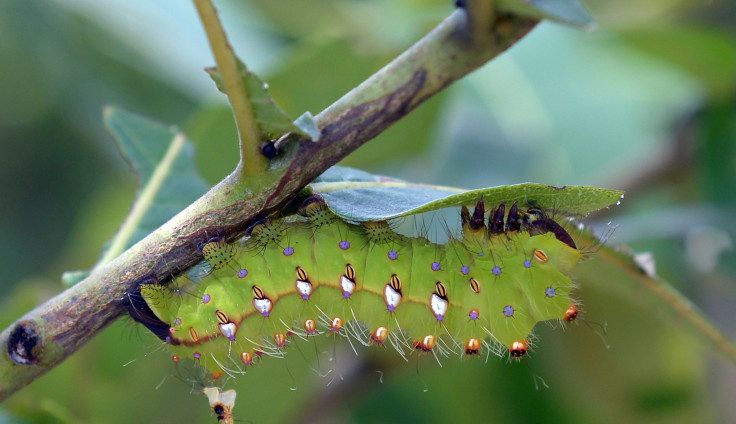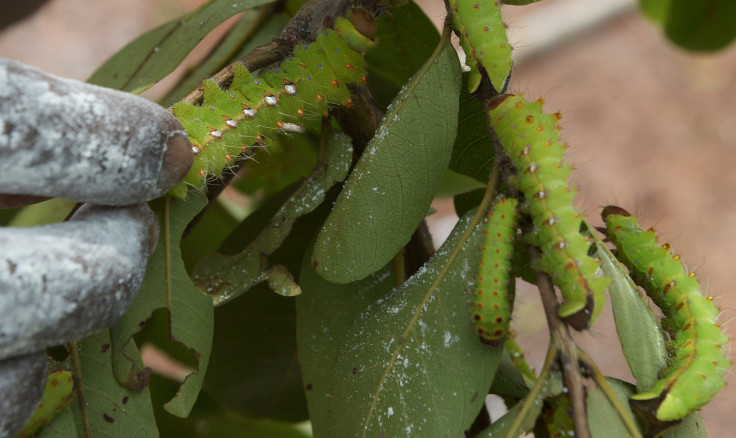Zombie Disease That Causes Exploding Caterpillars Is Common, Say Experts

A zombie virus causes its victims certain death in Lancashire: The virus causes caterpillars to climb to the top of plants and explode. It may sound like something straight out of a sci-fi novel, but according to experts, the virus is considered quite common.
The baculovirus is a microorganism that infected caterpillars, causing them to spontaneously combust. The insect, which typically avoided sunlight, would climb to the top of plants, where it would get eaten by prey or combust.
TRENDING: Video Shows Malia Obama Being Carted Out Of Lollapalooza In Chicago
Dr. Chris Miller, Mosslands Manager at the Wildlife Trust for Lancashire and North Merseyside, discovered the skins of dead caterpillars dangling from the tops of plants July 6 in Winmarleigh Moss Nature Reserve near Garstang. He was surveying butterflies when he noticed the caterpillars carcasses.
"I was doing this butterfly survey and I saw this caterpillar hanging upside down from a piece of vegetation," he told International Business Times Tuesday. "It looked really weird because they never do that because they're always down at the base of the vegetation, hiding away, so they don't get eaten by birds."

The virus also changed how the caterpillar usually avoided sunlight. The fact that it possessed the caterpillars to climb to a high spot and slowly liquefied them left Miller amazed.
Miller called the occurrence interesting. He said the virus was unique because it liquefied the host. He described the virus as "weird and a bit gruesome" and said he worked in the field surveying butterflies for years and had never seen anything like the baculovirus.
TRENDING: Apple Ditches iCloud Messages In iOS 11 Beta 5; Other Features Revealed
"I've been working on that site since 2010 and I’ve never seen anything like it," he told IBT. "One colleague has over 25 years of experience and he's never seen anything like that."
Scientists noticed similar incidences across the West Pennine Moors in Lancashire. The zombie-like behavior, caused by the baculovirus, appeared before.
The zombie virus infected the gypsy moth in New England, which caused it confusion and resulted in the moth climbing trees instead of hiding from predators. Kelli Hoover, a professor in the Department of Entomology in the Center for Chemical Ecology at Penn State University, cited her findings in a 2011 interview with NPR.
"All gypsy moths are susceptible to this virus. It's a naturally occurring virus," she told NPR. "You find it out in the field all the time. It's at low levels in the population until there's a population explosion, and then what can sometimes happen is the population will collapse because tons of insects get infected with this virus."
Miller likened the virus to natural population control. He explained butterflies and caterpillars will always lay a significantly greater number of eggs than they’ll need: Some of the eggs won't make it, and some of the caterpillars won't make it.
As another example, Miller explained how fig wasps lay their eggs, noting that their larvae eat some of the figs. But the figs are pollinated by the fig wasp and rely on the insect to produce their seeds. He said symbiotic relationships like this served to control the population.
"There are other species of fig wasps that are really parasitic and don't do the pollination," he said. "They just double the fig. So there are different levels going on."
There's a pattern: one occurrence balanced out the other. The balance becomes compromised if there's interference that changes the dynamic, Miller explained.
"So we come in a maybe shoot all the foxes, and then we have a rabbit problem," he said.
As far as parasites go, parasitic wasps also consumed caterpillars. They devour the caterpillar from inside out but apparently leave the organs untouched.
"There are all sorts of wasps that will do that — anything to get a free meal," Miller said.
© Copyright IBTimes 2025. All rights reserved.





















